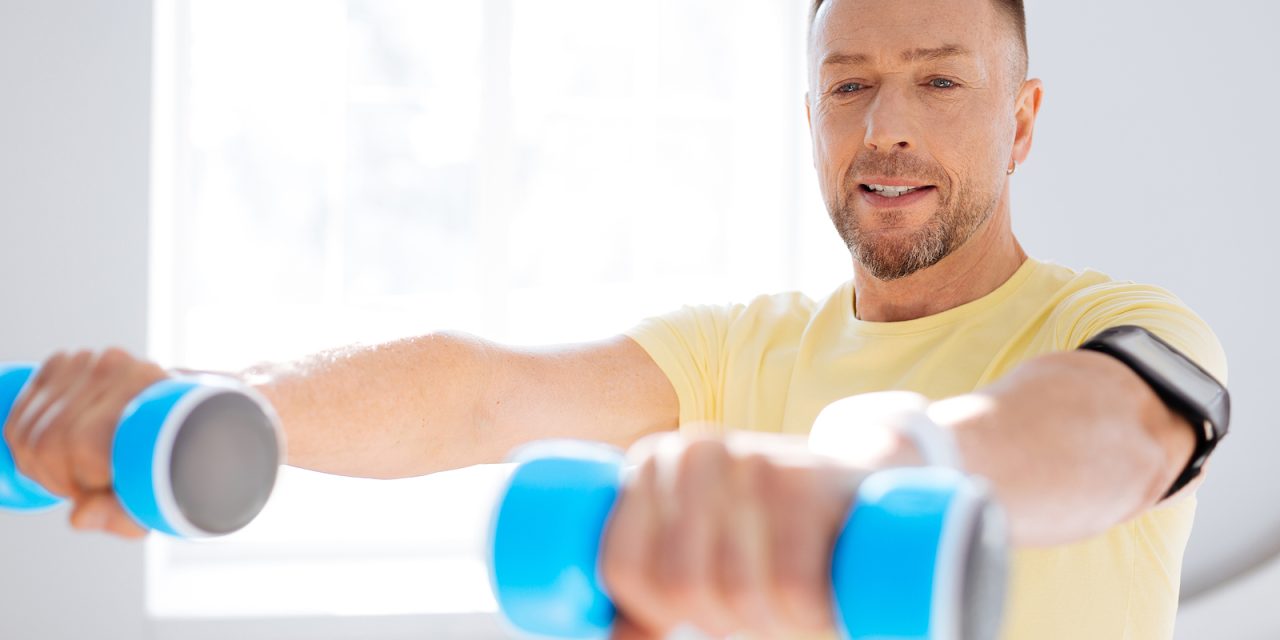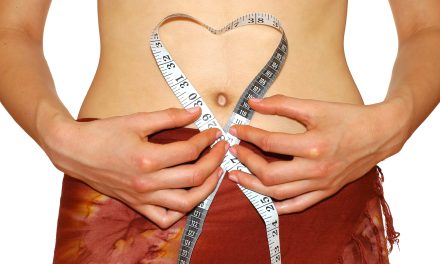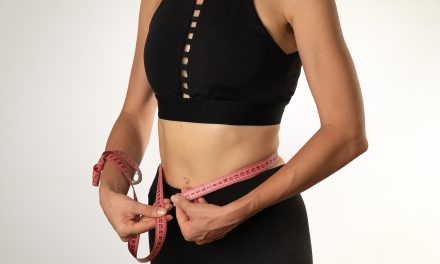When individuals embark on a journey to lose weight, many focus on the apparent health benefits or changes to their body shape. However, one often overlooked aspect of weight loss is its impact on the facial features. As the body sheds excess weight, the face often reflects this change, sometimes quite noticeably. While underlying bone structure remains the same, losing substantial body fat can lead to a more defined jawline, more pronounced cheekbones, and even potentially altered skin texture.
The skin on the face possesses a degree of elasticity that allows it to adapt as the underlying layers of fat diminish. Yet, this adaptation is not limitless. Significant or rapid weight loss can result in excess or sagging skin, while a gradual process may allow the skin more time to adjust. Additionally, the quality of a person’s diet and their hydration levels play crucial roles in maintaining a healthy skin appearance. Although genetics can dictate skin resilience to an extent, lifestyle choices and proper skin care can influence how youthful and smooth the skin appears following weight loss.
Key Takeaways
- Weight loss can significantly alter facial features.
- Skin elasticity and proper care influence changes in facial appearance.
- Diet and hydration are key to maintaining healthy facial skin post-weight loss.
Understanding Weight Loss and Facial Changes
Weight loss often leads to significant alterations in facial appearance due to changes in fat distribution and skin elasticity. These transformations can vary based on one’s age and the amount of weight lost.
The Role of Age in Weight Loss and Facial Structure
As individuals age, the natural production of collagen and elastin, two proteins responsible for skin firmness and elasticity, diminishes. This decrease means that when weight is lost, especially in older adults, the skin may not retract as effectively, potentially leading to a saggy appearance. Age can also influence how facial fat is lost. Younger individuals might see more uniform fat reduction across their faces, while older adults may experience more pronounced changes in specific areas.
Effects of Pounds Shed on Facial Aesthetics
Weight loss can lead to a more contoured facial structure, as the reduction of fat deposits around the cheeks, neck, and jawline can enhance definition. However, shedding significant pounds can also result in unwanted skin changes, with some individuals noticing their skin appearing less plump and potentially more wrinkled. The degree to which this occurs is influenced by the amount of weight lost and the rate at which it is lost. Rapid weight loss might lead to more noticeable skin laxity compared to gradual weight loss, which can allow the skin more time to adapt to the changing contours of the face.
Impact of Diet and Hydration on Facial Appearance
When undertaking a weight loss journey, the changes in one’s diet and hydration levels can significantly affect facial appearance. Consuming the right balance of nutrients and maintaining proper hydration can influence skin health and facial contour.
Nutrient Intake and Skin Health
A balanced diet high in vitamins and minerals, especially those like vitamin C and E, can promote robust skin health. Vitamin C, for example, is crucial for collagen synthesis, which keeps the skin firm and resilient. On the other hand, not getting enough essential nutrients can lead to a sallow or lackluster complexion. Fiber intake supports digestion, which is linked to clearer skin. However, a diet high in sodium can exacerbate water retention, leading to puffiness in the face. Similarly, excessive calorie restriction may lead to premature skin aging and loss of facial volume, as adipose tissue beneath the skin decreases.
Hydration and Water Retention Effects on the Face
Hydration plays a pivotal role in maintaining a plump, healthy-looking face. Drinking sufficient water helps flush out toxins that may cause bloating and puffiness. Moreover, staying hydrated ensures that the skin can retain its elasticity and suppleness. In contrast, dehydration can lead to a sunken appearance, as the body holds onto water, which might also result in undesired puffiness due to water retention. Achieving a balance in fluid intake, coupled with a diet moderate in sodium, assists in reducing water retention and maintaining a more defined facial structure as one progresses with losing weight.
Skin Elasticity and Volume Changes
When an individual loses weight, the changes in facial contour are often due to alterations in skin elasticity and volume. These modifications can affect how tight or loose the skin appears.
Collagen and Elastin in Skin Tightness
Collagen and elastin are critical proteins that contribute to skin’s tightness and elasticity. Collagen provides structural support, while elastin allows the skin to return to its shape after stretching or contracting. During weight loss, the face may lose fat, which can lead to a decrease in skin volume and, at times, a more prominent appearance of wrinkles or creases.
Dealing with Sagging and Loose Skin Post-Weight Loss
After significant weight loss, individuals may notice sagging or loose skin on their face due to reduced fat volume and changes in skin laxity. Treatments to improve this condition can include topical applications of substances such as hyaluronic acid, which helps to hydrate and plump the skin. Additionally, professional procedures to enhance skin firmness and reduce the appearance of sagging can be considered.
Facial Contours and Definition
When one loses weight, notable transformations often occur in the facial area. These changes can lead to a more defined jawline and cheeks as the distribution of facial fat alters.
Jawline and Cheek Definition After Losing Weight
As individuals lose weight, they may notice a sharper jawline and more pronounced cheeks. This is due to the reduction in subcutaneous fat around these areas. A slimmer face often brings the jawbone into prominence, resulting in what is commonly referred to as a “chiseled” look. The cheeks, no longer rounded by excess fat, can develop a more angular and sculpted appearance, often associated with a youthful visage. These physical changes significantly impact one’s facial contours and are linked to body fat redistribution, highlighted by sources like Livestrong and Bored Panda.
Managing Changes in Fullness and Facial Fat Distribution
The journey to a more defined face isn’t uniform for everyone; decreased facial fullness varies from person to person. While some experience a balanced reduction in facial fat, others may see changes that give a more worn appearance. Fat redistribution across the face is a natural weight loss process. This process can be affected by factors such as age, genetics, and the amount of weight lost. Understanding and managing these changes can be crucial for maintaining a healthy and proportional facial appearance.
The Influence of Skin Care Products
Skincare products play a pivotal role in addressing changes to the face due to weight loss. Moisturizers with hyaluronic acid can help retain skin plumpness, while retinoids and peptides aid in minimizing the visible signs of aging.
Role of Moisturizers and Hyaluronic Acid
Moisturizers are paramount in maintaining the skin’s hydration, especially after weight loss, which can lead to a loss of facial volume. A key ingredient to look for in these products is hyaluronic acid, a substance naturally found in the skin that holds water and helps keep it hydrated and plump. Consistent application of a moisturizer that contains hyaluronic acid can significantly mitigate the appearance of sagging or loose skin on the face.
Benefits of Retinoids and Peptides for Aging Skin
The inclusion of retinoids in a skin care regimen supports skin rejuvenation. Retinol, a form of vitamin A, is lauded for its ability to boost skin’s collagen production, enhancing facial volume and smoothing fine lines. On top of that, peptides are fundamental for the skin’s resilience; they signal the skin to produce more collagen, combatting wrinkles and tightening the skin that may appear looser following weight reduction. It is also beneficial if the products contain Vitamin C, known for its antioxidant properties and its role in collagen synthesis and skin repair.
Non-Surgical Methods to Enhance Facial Features
Evolving aesthetic technologies allow individuals to enhance their facial features without requiring invasive surgical procedures. These treatments, ranging from fillers to sophisticated skin-tightening techniques, provide rejuvenation and volume while potentially contributing to a more defined facial structure.
The Use of Fillers to Restore Volume
Facial fillers, such as Restylane and Juvederm, are gel-like substances injected beneath the skin. They are designed to restore lost volume, smooth lines, soften creases or enhance facial contours. Restylane, for instance, contains hyaluronic acid that mimics naturally occurring substances in the skin, thus providing a natural look.
- Applications:
- Cheeks
- Lips
- Nasolabial Folds
- Duration: Typically lasts 6 to 18 months
- Key Benefits:
- Immediate results
- Minimal downtime
Maximizing Results with Botox and Ultherapy
Botox, a purified form of botulinum toxin, is used to temporarily paralyze facial muscles, reducing the appearance of lines and wrinkles. It is meticulously administered in small doses and is typically applied around the forehead, eyes, and mouth.
- Target Areas:
- Crow’s feet
- Forehead lines
- Glabellar (frown) lines
Ultherapy, on the other hand, uses ultrasound technology to lift and tighten the skin non-invasively. The device, known as Ulthera, delivers focused ultrasound energy to heat skin at different depths, stimulating collagen production for a firmer, more youthful appearance.
- Suitable For:
- Brow lifting
- Jowl lifting
- Neck smoothing
- Advantages:
- No surgery required
- Progressive yet notable results over 2-3 months
Tackling Wrinkles and Fine Lines
As individuals lose weight, they may find wrinkles and fine lines more pronounced. The reduced facial volume after weight loss can lead to an increase in visible creases, making effective treatments for these signs of aging a point of interest.
Understanding the Formation of Creases
The natural aging process causes the skin to lose collagen and elastin, diminishing its ability to bounce back and leading to wrinkles and fine lines. Significant weight loss can exacerbate this effect as the fat that plumps the skin decreases, resulting in saggy skin and accentuated creases. External factors such as sun exposure and smoking also contribute to the breakdown of skin’s supportive structures, thus accelerating the formation of such imperfections.
Effective Treatments for a Smoother Complexion
When addressing wrinkles and fine lines post-weight loss, a combination of skincare products and professional treatments can be effective:
- Skincare Products: Incorporating products that contain retinol, a vitamin A derivative, can stimulate collagen production and promote cell turnover, helping to reduce the appearance of fine lines. Consistent use of moisturizers with hyaluronic acid can also provide hydration and improve skin elasticity.
- Professional Treatments: More immediate results may be seen with professional treatments such as:
- Facial Fillers: Dermal fillers can replace lost volume and smooth out deeper creases.
- Laser Therapy: These treatments can tighten the skin and stimulate collagen production, tackling wrinkles and laxity.
It is important to consult with a dermatologist to determine the most suitable treatment plan based on individual skin type and the extent of the creases and wrinkles.
Professional Advice and Medical Procedures
After significant weight loss, individuals may notice changes in their facial skin such as sagging or gauntness. Professional advice and medical procedures can address these concerns effectively.
When to Consult a Dermatologist
One should consult a dermatologist if they observe pronounced changes in their facial skin post-weight loss, including sagging skin or increased wrinkles. Dermatologists can offer specialized skin care advice and treatments such as fillers or lasers to improve the skin’s elasticity and appearance.
Exploring Plastic Surgery Options
For more extensive changes in skin after weight loss, exploring plastic surgery options may be appropriate. Procedures like a facelift can tighten loose skin and enhance facial contours. Discussing one’s health history and goals with a certified plastic surgeon is vital to determining the best course of action.
Lifestyle and Its Effects on Skin After Weight Loss
Achieving weight loss can lead to significant changes in facial appearance. Post-weight loss, the skin’s relationship with lifestyle factors becomes crucial in managing its health and aesthetics.
The Importance of Exercise and Strength Maintenance
Regular exercise contributes to overall energy levels and aids in strength maintenance, both of which are particularly important after weight loss. When individuals lose a noticeable amount of weight, the skin, especially on the face, may become looser due to decreased fat deposits. Strength training can help ton the underlying facial muscles, which, in turn, can support the skin and improve its contour.
- Health benefits: Regular physical activity boosts circulation, improving cell turnover and skin health.
- Exercise types: Resistance exercises help maintain muscle that supports the skin, while cardiovascular workouts enhance energy and promote overall skin vitality.
Adopting a Healthy Routine for Lasting Benefits
One must adopt a comprehensive healthy lifestyle that extends beyond diet and exercise to maximize the benefits of weight loss. A routine with sufficient hydration, balanced nutrition, and sun protection is essential.
- Hydration & Nutrition: Adequate water intake ensures the skin stays hydrated, while a diet rich in antioxidants supports skin repair and can mitigate sun damage.
- Sun Protection: Consistent use of sunscreen is crucial in preventing further skin damage and maintaining skin elasticity.
This approach to a comprehensive lifestyle routine amplifies the positive aspects of weight loss. It minimizes potential adverse effects on the skin by providing the necessary support to adapt to a new body shape.
How to Maintain a Youthful Facial Appearance
When maintaining a youthful facial appearance, focusing on preventing skin damage and maximizing the skin’s natural vitality through key antioxidants are essential strategies.
Preventing Skin Damage and Premature Aging
Skin damage and premature aging of the face can often be mitigated through several protective measures. Diligently applying sunscreen with a high SPF protects the skin from harmful UV rays, a significant cause of early wrinkles and fine lines. Additionally, lifestyle choices such as avoiding smoking and limiting alcohol consumption can significantly reduce the risk of premature aging. Ensuring adequate hydration helps maintain the skin’s elasticity and prevent bloating, resulting in a more energized and youthful appearance.
Key Antioxidants for Maintaining Youthful Skin
Antioxidants play a vital role in combatting the oxidative stress that contributes to skin aging. Incorporating foods that are rich in antioxidants can help maintain youthful skin. Here are some key antioxidants and their sources:
- Vitamin C: Found in citrus fruits, it aids in collagen production and skin repair.
- Vitamin E: Present in nuts and seeds, it protects skin from environmental damage.
- Beta-carotene: Located in colorful vegetables, it is converted to vitamin A in the body, which helps repair skin tissue.
Feeding skin with these antioxidants, both from dietary sources and topical treatments, can complement the body’s natural repair processes and delay the signs of aging.
Frequently Asked Questions
In this section, we address common inquiries regarding the alterations in facial appearance due to weight loss and how to manage the associated changes effectively.
What are effective methods to restore facial volume after weight loss?
Following significant weight loss, individuals may consider maintaining a balanced diet rich in nutrients vital for skin health or explore cosmetic procedures like fillers for restoring facial volume.
What are the typical facial differences before and after weight loss in women?
Weight loss in women typically results in a more defined facial structure, with potential reductions in cheek fat and a visible jawline. Still, it can also occasionally lead to increased skin laxity or wrinkles.
Can weight loss enhance facial attractiveness?
For many, weight loss results in enhanced facial features, such as a more sculpted jawline and higher cheekbones, which may be perceived as increases in facial attractiveness.
How can one address facial wrinkles that appear post weight loss?
To manage facial wrinkles after weight loss, it is advised to hydrate adequately, follow a skin-care routine tailored to increasing skin elasticity, and consider treatments that promote collagen production.
Will shedding pounds affect the pigmentation of my skin?
There is no direct correlation between weight loss and changes in skin pigmentation; however, lifestyle changes accompanying weight loss, like increased sun exposure, can potentially affect skin tone.
How can I specifically target and reduce facial fat?
Targeted facial fat loss is not generally possible; however, overall weight reduction and exercises that tone facial muscles may contribute to a slimmer facial appearance.





























